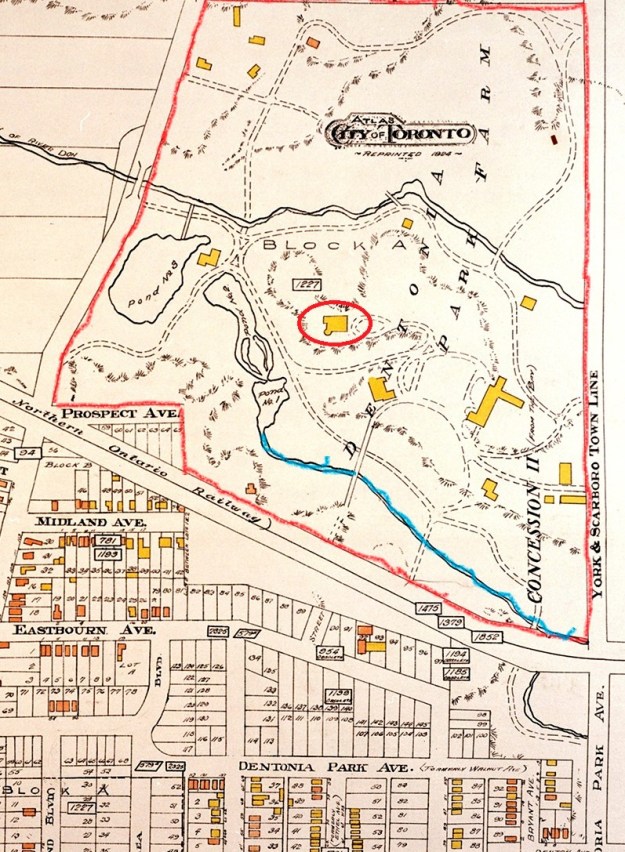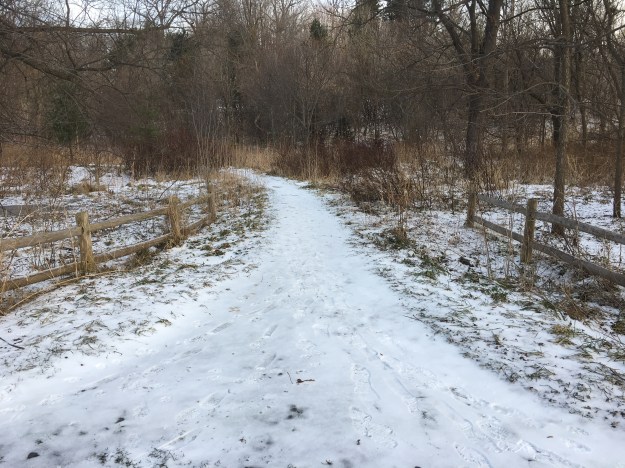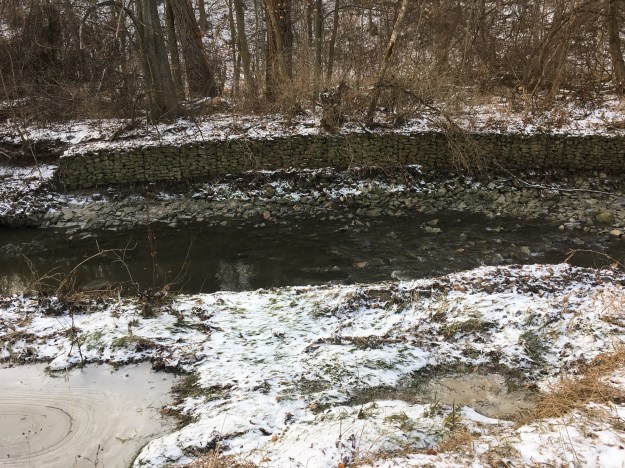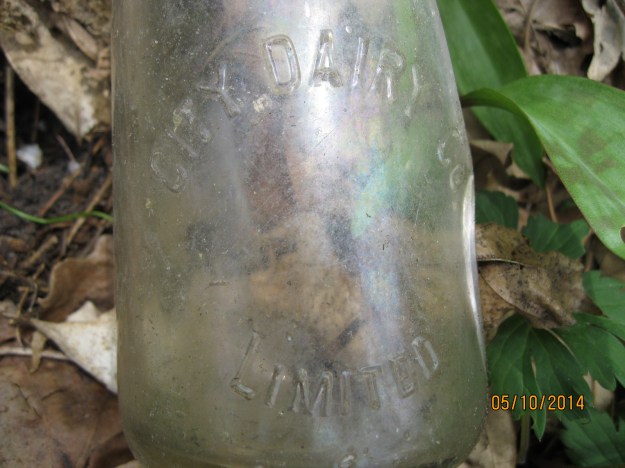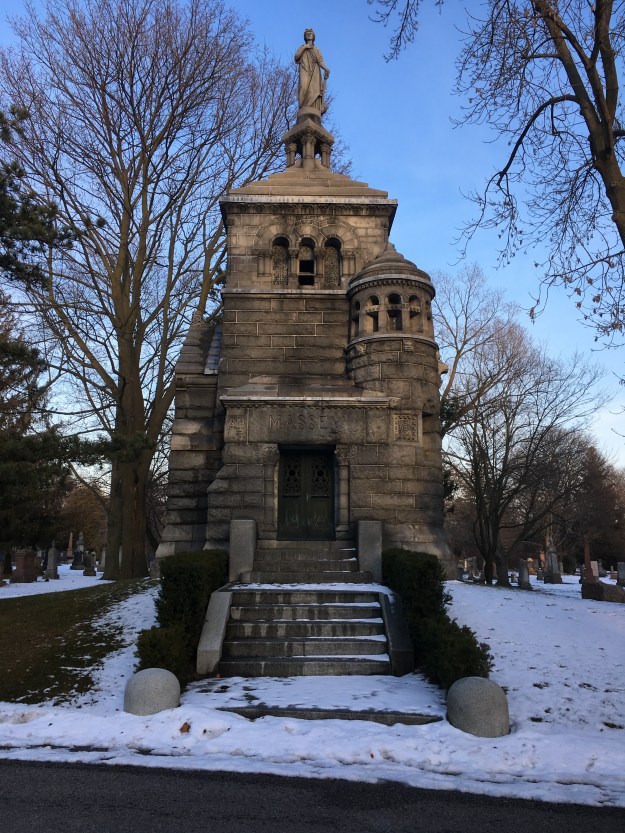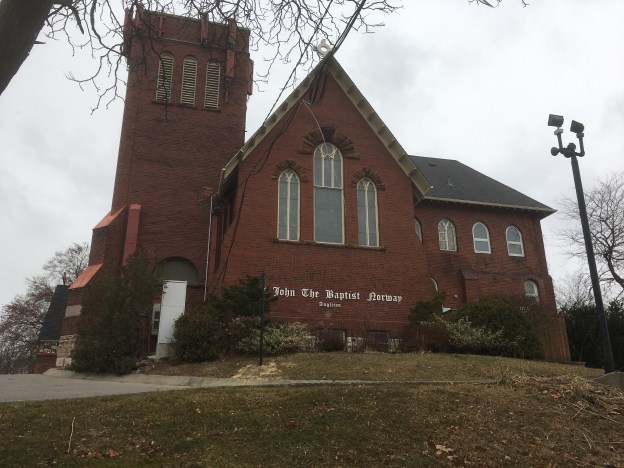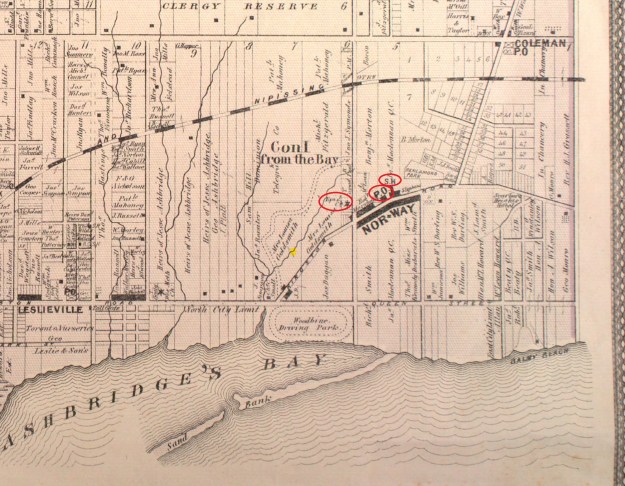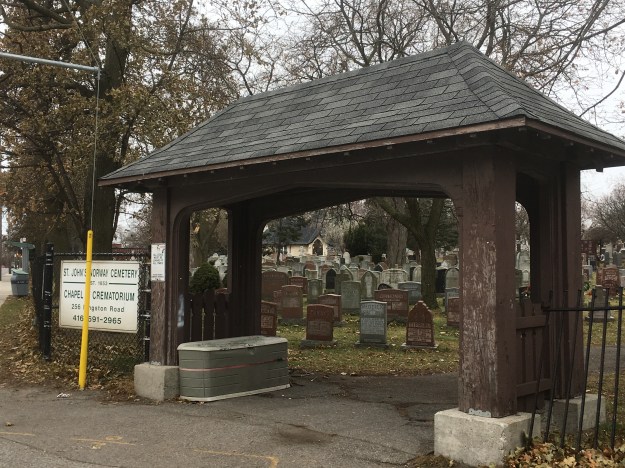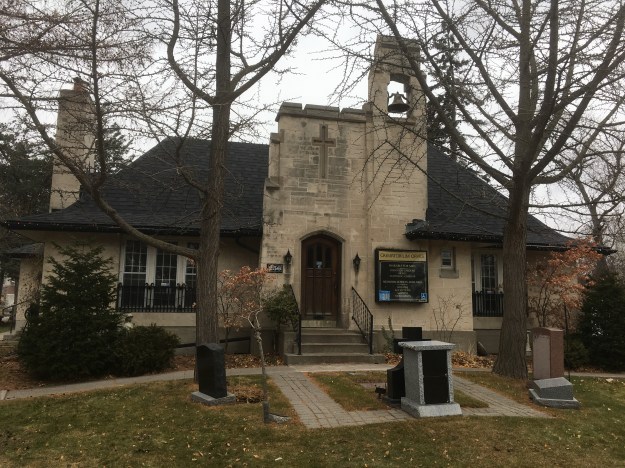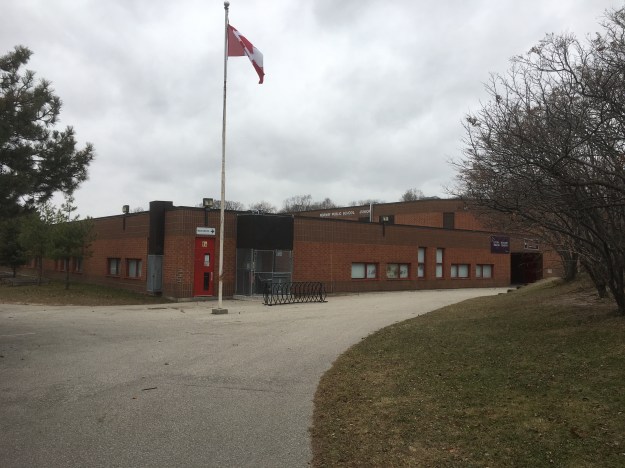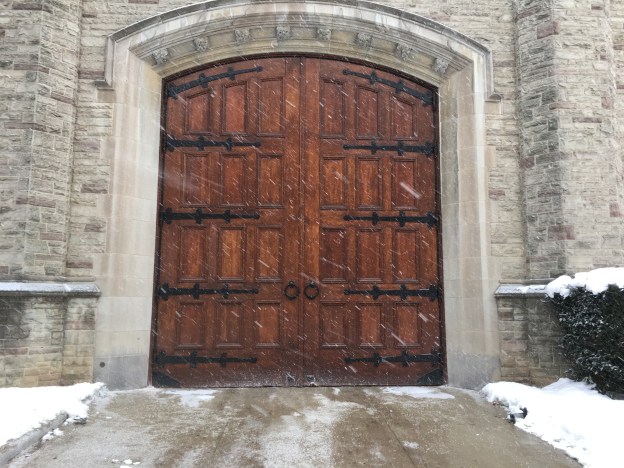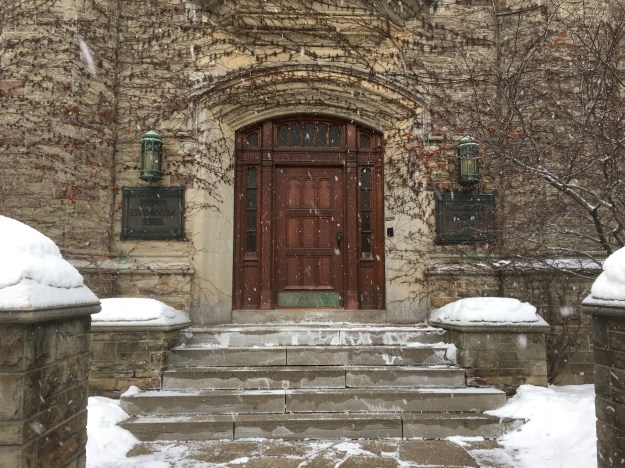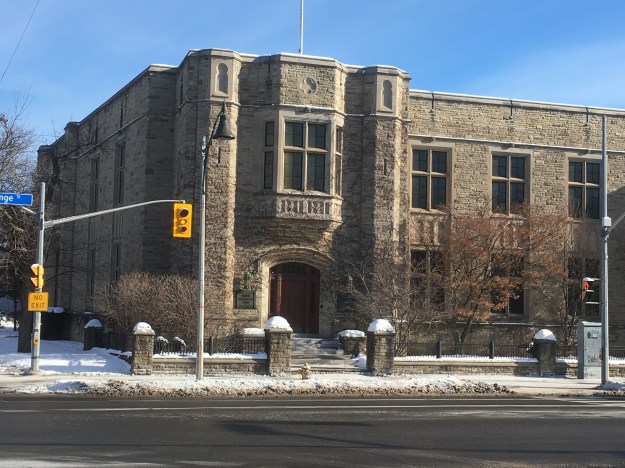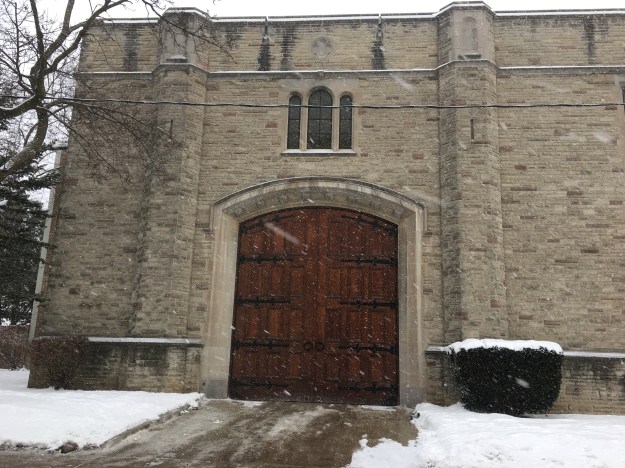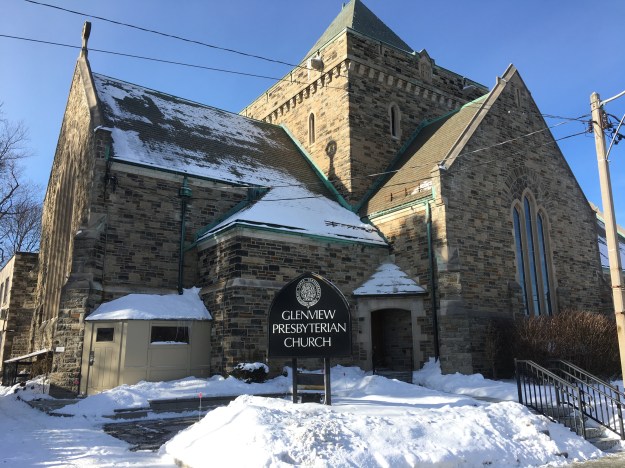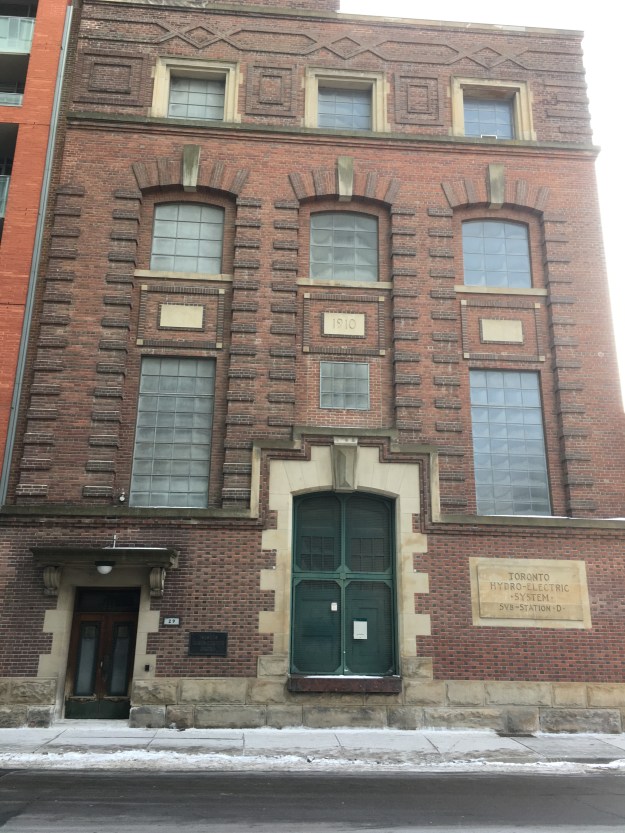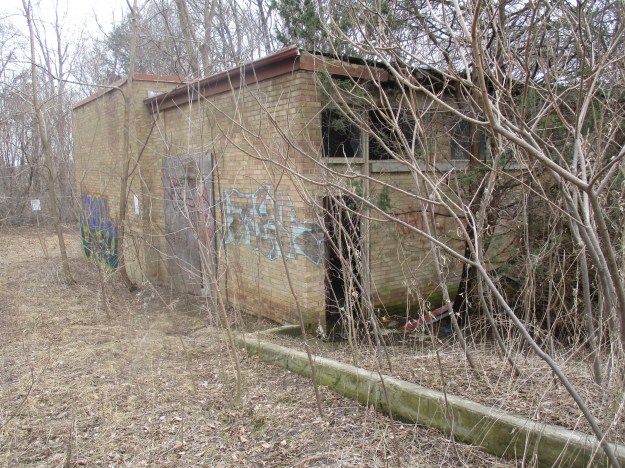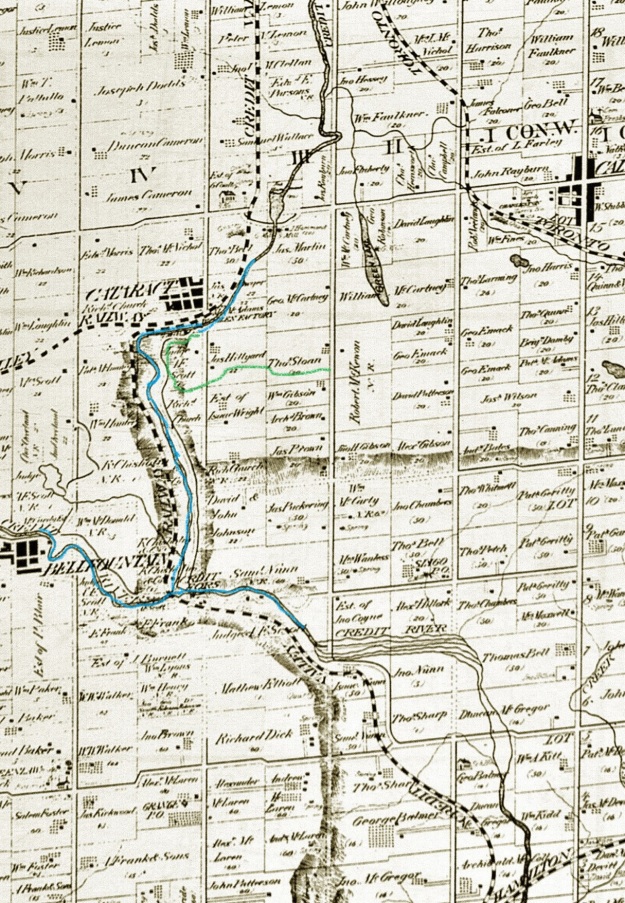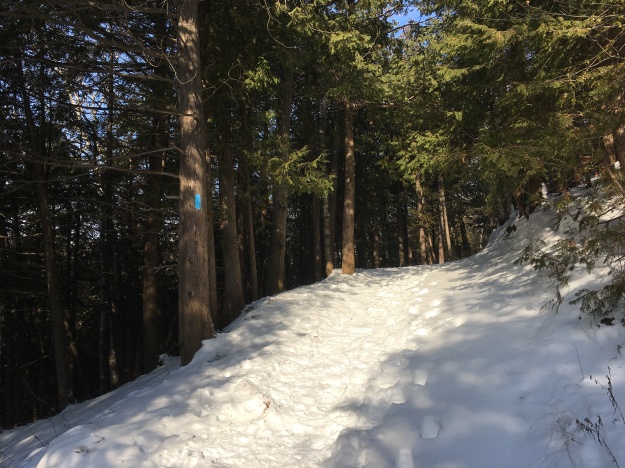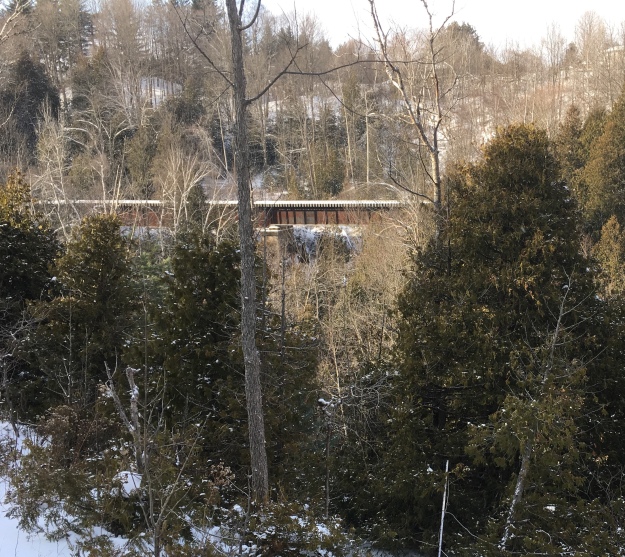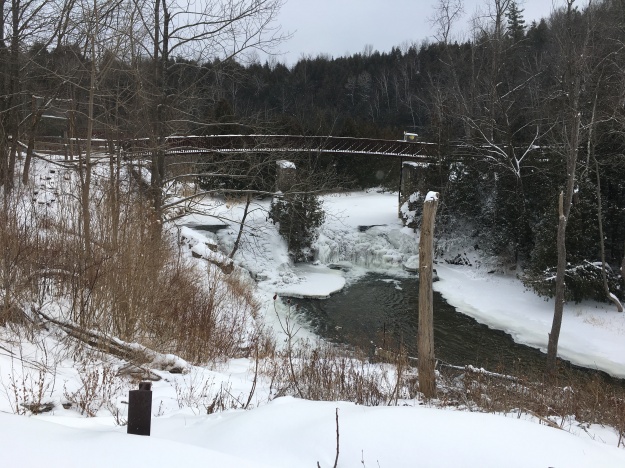Saturday, January 20, 2018
Pickering Township was surveyed in 1791 by Augustus Jones but a trader named Duffins had already been established for 3 years and the local creek had taken on his name. Major John Smith was awarded 4,800 acres of land in Pickering Township for his services in the Revolutionary War in the USA and soon a small settlement began around the bridge where Kingston Road crossed Duffins Creek. To supplement the few houses, John’s son David, determined to build a saw and grist mill and an order was placed with the Commissary-General’s department for the issue of the mill stones and hardware. We parked on Elizabeth Street near the entrance to Duffins Creek Trail. There is a totem pole in the park which was installed in 2007 to commemorate the 100th anniversary of Scouting. We had previously visited the remains of the Camp of The Crooked Creek in Morningside Park.
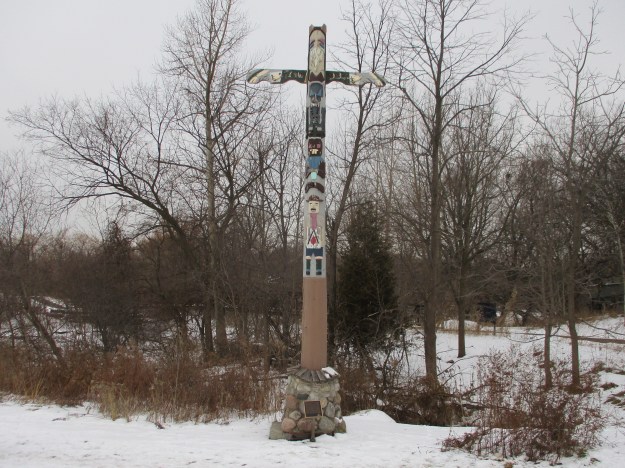
Although the mill equipment had arrived by 1799 the mills were never erected and it is likely that they were sold along with 850 acres of land to Timothy Rogers in 1807. Kingston Road had been complete just two years earlier and a small community of Quakers began to form at Duffins Creek. The mills started a long progression of changing hands and going in and out of business. Stores established in the early community also kept failing. In 1824 Francie Leys opened a store and used his house as an inn to accommodate travelers. When he opened a post office in his store in 1829 it was called Pickering, the community continued to be known as Duffins Creek. The 1878 atlas below still shows the community as Duffins Creek although the name was officially changed to Pickering a decade earlier. The original village has become overgrown with development and is now referred to as Pickering Village.
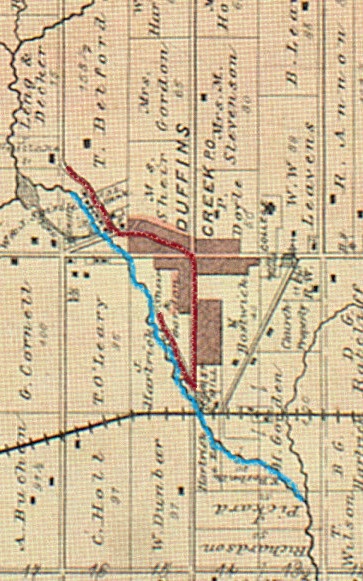
By 1846 the population was about 130 and there were four churches. These were comprised of a Presbyterian, Weslyan, Quaker and Roman Catholic. The usual small town professionals had also arrived including blacksmiths, tanners, tailors, shoemakers, and inn keepers. Through the 1850s there were at least 3 grist and saw mills operating at the same time, located above and below Kingston Road. In August of 1856 the Grand Trunk Railway gave the community access to new markets and each of the mills had a spur line. Milling became the main industry with one grist mill surviving until 1934 and the other in 1956. Duffins Creek has previously frozen over but the recent warm spell flooded the creek with melt water, breaking the ice and washing it onto the creek banks. Some of these chunks are over 30 centimetres thick.

As we followed the creek we came to the place where a weir has been built to prevent sea lamprey from having access to the upper reaches of the creek. Sea lamprey are an invasive species that aggressively feed on the body fluids of fish by attaching themselves with their suction cup mouths and rows of sharp teeth. The first weir on both Duffins Creek and the Humber River are designed with traps in them to catch the adult lamprey as they move upstream to spawn. The lamprey weir on Duffins Creek was not visible under all the blocks of ice in the creek.
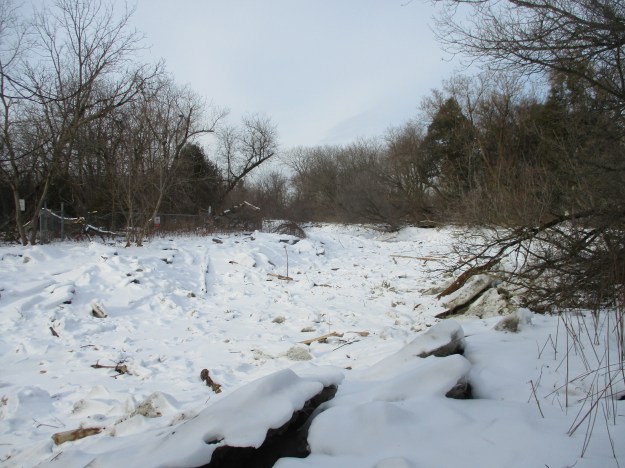
St. George’s Anglican Church was built in 1841 and is the oldest surviving church building, not only in Pickering but in all of Ajax as well. The red bricks for the church were provided by the Grand Trunk Railway in exchange for a right of way across lands that belonged to the church.
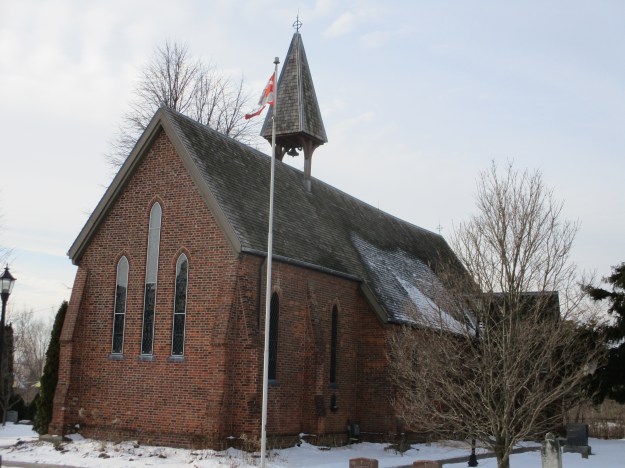
The Roman Catholic Church was built in 1871 and is the tallest building in the old village. Built in the Gothic Revival style with pointed arches throughout and even the roof shingles have been laid with an interesting pattern to catch the eye. Many early communities did not have a Roman Catholic church and so this is a little unusual. The fact that the roof is cut with dormer windows is very rare in a church.

Pickering village attained a population of 1000 by 1900 and had its own newspaper called The Pickering News. In 1890 an annual subscription was $1.00 Strictly in advance, $1.25 If not so paid. This little building with a boomtown front still houses a print shop. Notice the words “The News” above the door, however, this was not the original building for the newspaper. The prefabricated blocks are designed to look like cut stone and this innovation didn’t come out until around 1900.
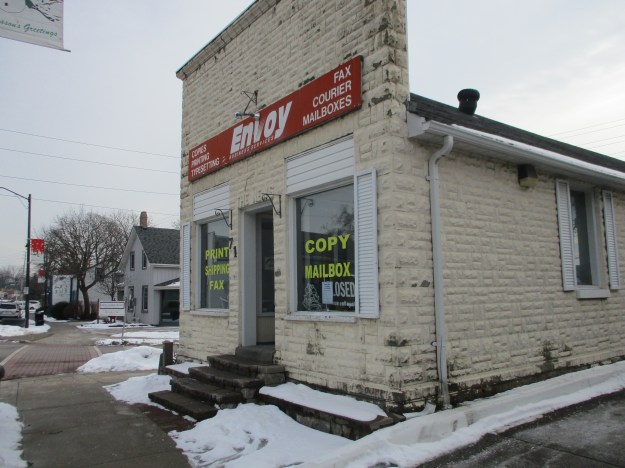
In 1850 Dr Robert Burns had this unusual home built to accommodate his family and his medical practice. The two story extended bays with copper cupolas give the building a decorative look that stands out on the main street of the town. In the 1860’s, two family doctors ran their practices out of this early medical building
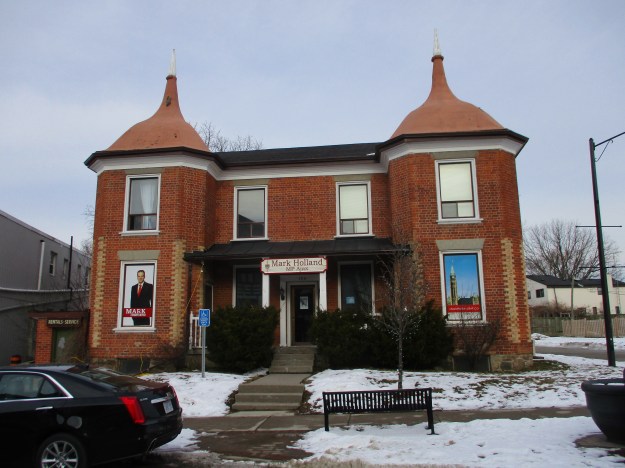
The cover photo features one of the more decorative buildings in the old town. John Cuthbert’s Hotel features extensive dichromate brick patterns and a recessed main entrance. The hotel was built in 1881 and was operated by the Gordon Family from 1893 until 1952.

The Trans Canada Trail also follows Duffins Creek Trail and the entire area is a flood plain for the creek. During the recent melt, this whole section of park was flooded and then the surface froze several centimetres thick. When the water drained out from underneath it left the ice clinging to the bottom of the trees.

The original village of Duffins Creek, now known as Pickering Village has many other historic buildings that can be enjoyed on a walking tour. The historical society has produced a tour map that can be found here.
Google Maps Link: Pickering Village
Like us at http://www.facebook.com/hikingthegta
Follow us at http://www.hikingthegta.com


